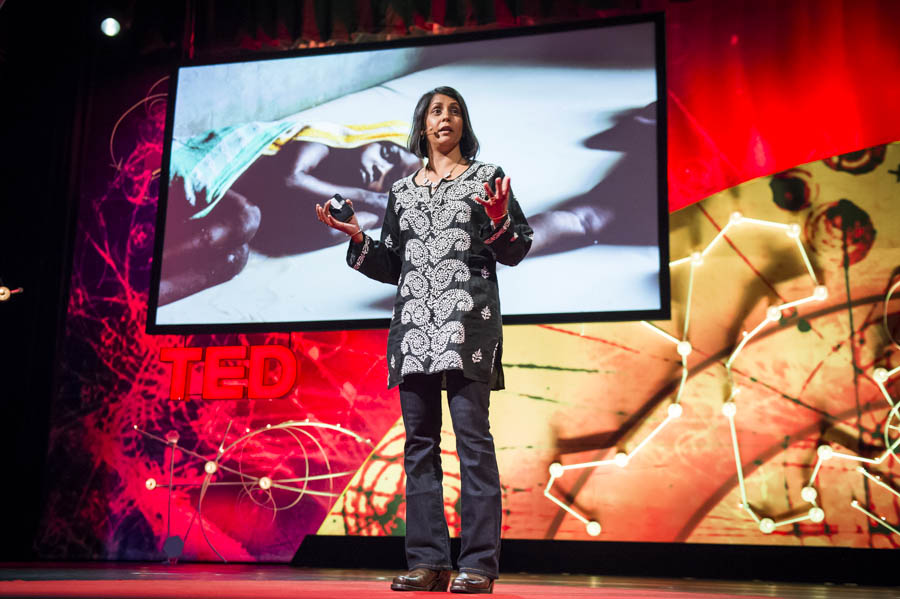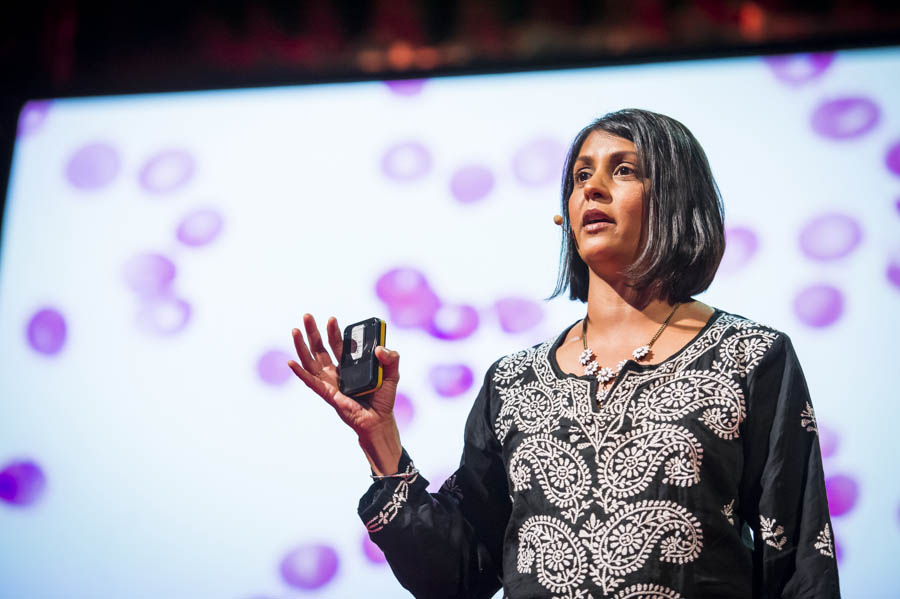There’s a question that’s been troubling journalist Sonia Shah since she was a child: What is malaria, and why is it killing so many people? This morning during the session “Listening to Nature,” journalist Shah looks at the complexities making it so hard for humanity to rid itself of this killer disease, which kills hundreds of thousands of people every day and has other pernicious effects on societies and economies.
Since the 1600s, we’ve known that malaria can be cured with quinine from the bark from the cinchona tree, and we’ve known since 1897 how to prevent malaria, when we discovered the parasite is carried by mosquitoes. Yet malaria may be the infectious disease that’s killed more than any other in human history, with 300 million cases of malaria a year globally, resulting in .5 million deaths.
After five years of research Shah believes there are three main challenges, which collectively add up to one major fourth:
1. Scientific: The malaria parasite is a wily, resilient, complex pathogen.
Throughout its life, the parasite lives in two very different, hostile environments: the cold-blooded mosquito and then the warm-blooded human. The parasite thrives in hostile situations. For another thing, the parasite shape-shifts, going through seven different forms in its life cycle. A drug that works in one stage might do nothing in the parasite’s other stages. And the parasite can hide undetected in the body for decades.
2. Economic: The group that suffers the most from malaria is the group with the least power: the poor.
Poverty comes with rudimentary housing, marginal land, poor drainage, lack of door screens and electricity. Poor housing means being outside more, which in many areas means: More malaria. And according to Shah, not only does poverty cause malaria, but malaria causes poverty. Malaria hits hardest during harvest season, so just when farmers need to be in the fields, they’re home sick with a fever. Malaria also begets more disease and further economic loss. According to a study by Jeff Sachs, says Shah, if a society has malaria, it depresses economic growth by 1.3% every year, year after year.
3. Cultural: In societies affected by malaria, it’s not seen as a killer disease but as a normal way of life.
Says Shah, “The people who have the most malaria tend to care about it the least.” As a comparison, in the developed west, we usually don’t take even rudimentary measures against the cold and flu, despite how annoying it is to get. We just treat it as a normal part of life. Similarly, it’s hard to incentivize people in societies with malaria to run to the doctor to get diagnosed.
All of this adds up to the biggest obstacle: the political one. How do you get a political leader to care about malaria? Historically, says Shah, you don’t. It’s crucial to understand these three challenges in tandem with one another, and in the past, major efforts against malaria — which have come from outside malaria societies — have underestimated one area or another. The first major effort against malaria was in the 1950s, when the U.S. State Department started using DDT as a widespread weapon against malaria. They were so confident in DDT that they stopped doing other scientific research on malaria. So when it began to fail, the campaign was unequipped to find an adequate response. The campaign failed.
More recently, the major effort of the ’90s to fight malaria has viewed the bednet as its hero. The bednet is a cheap, easy-to-use tool, distributed by the tends of thousands — that no one is using. (Studies suggest that only 20 percent of bednets distributed have been used.) The effort overlooks the cultural challenge: It doesn’t help a family that already has malaria, and it’s inconvenient. In short, it asks people to add something that doesn’t fit into their lives. Which seems like a minor inconvenience worth taking if you’re fighting a killer disease — but not if you see malaria as a normal, everyday problem. As Shah says, it would be as if a group of well-meaning Kenyans came to the U.S. and said, “Hey, I’ve got this great, easy-to-use tool to help you fight flu. All you have to do is wear it every day, everywhere you go during flu season. It’s called a face mask.”
The solution, says Shah, is not only awareness campaigns, which may someday be more effective, but something bigger: Attack the malarial way of life. Fix bad housing, bad drainage, bad roads, rural poverty. It’s worked before — in Britain and other places — and it can work again.
Sonia Shah’s talk is now available for viewing. Watch it on TED.com »


Comments (9)
Pingback: The single-celled killer outwitting mankind | Brannan Blog
Pingback: The past and future of malaria: A Q&A with Sonia Shah | TokNok Multi Social Blogging Solutions
Pingback: Cinchona | Find Me A Cure
Pingback: Gallery: Behind-the-scenes as TEDGlobal 2013 draws to a close | BizBox B2B Social Site
Pingback: Gallery: Behind-the-scenes as TEDGlobal 2013 draws to a close | Krantenkoppen Tech